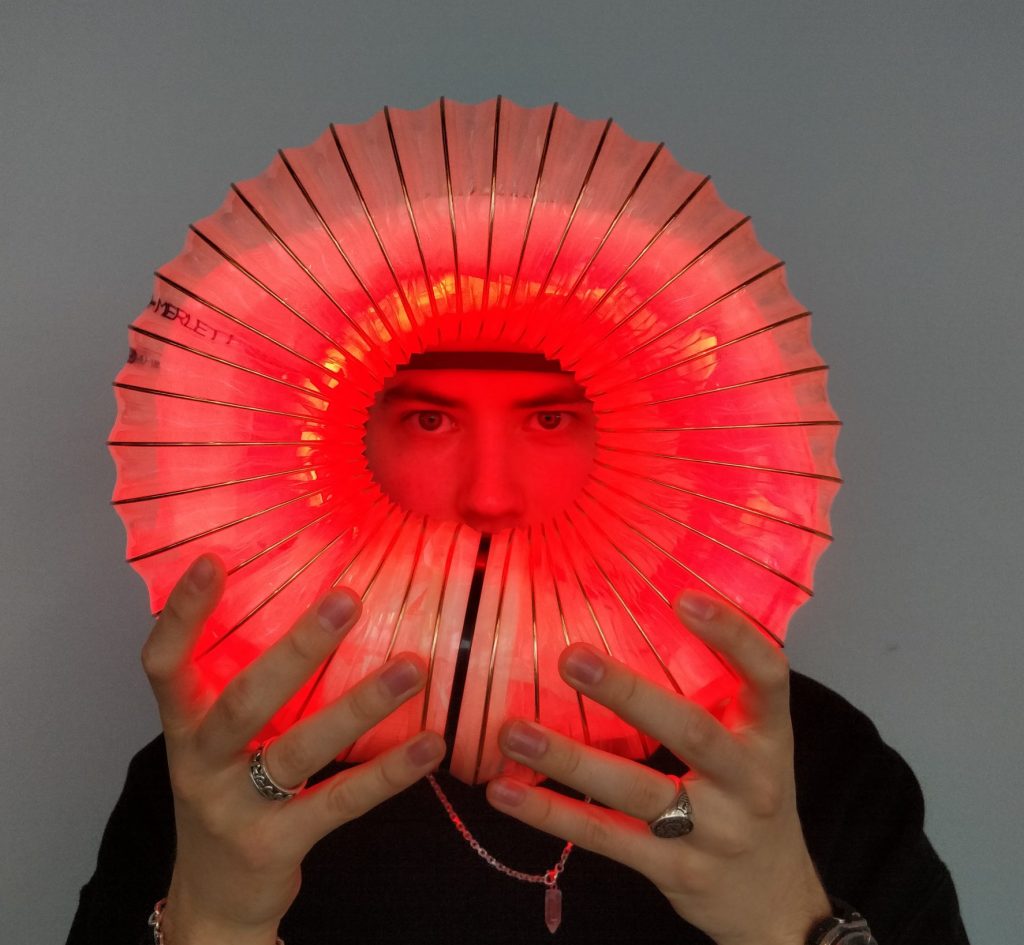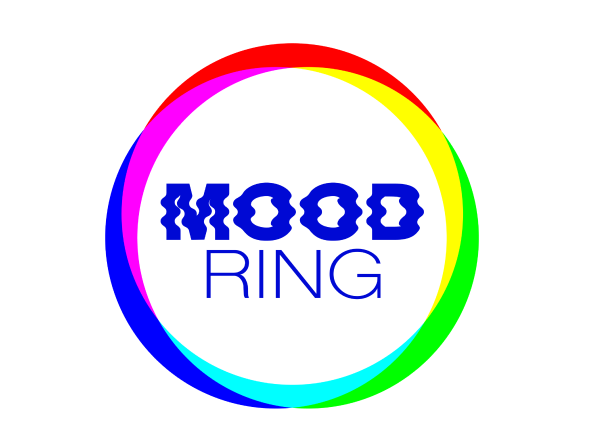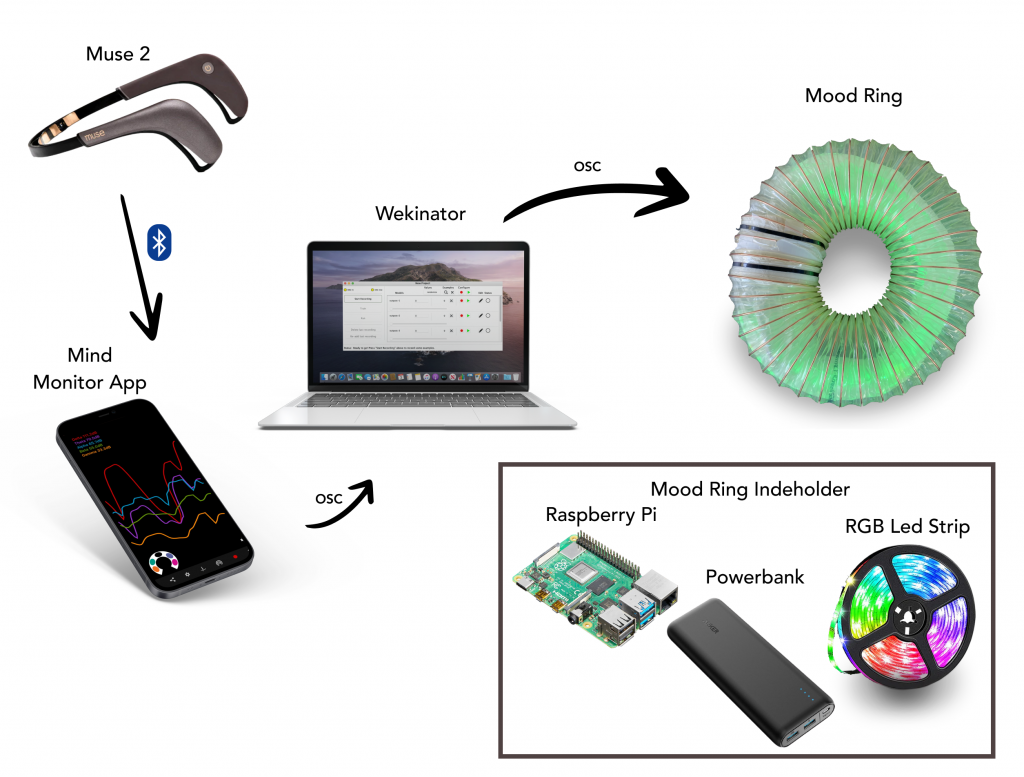A speculative exploration of emotions in technology

In this speculative design project, we explore how people interact with and reflect upon emotion-sensing technology throug a prototype inspired by the color-changing mood rings that many are familiar with from their childhood. The prototype analyzes one’s emotional state by utilizing EEG and a machine learning algorithm.

Our project, Mood Ring, is a prototype designed to measure and visualize a user’s emotions using brainwave data. We have incorporated several components to create this interactive experience.

The Muse 2, a portable headband, captures the user’s brainwaves through EEG technology during meditation sessions. These brainwaves, including alpha, beta, delta, gamma, and theta waves, are transmitted to the Mind Monitor app via Bluetooth.
The Mind Monitor app analyzes the brainwave data using Fast Fourier Transform (FFT), a mathematical algorithm for frequency domain analysis. It then sends the processed data to Wekinator, an open-source software tool, through Open Sound Control (OSC) protocol.
Wekinator utilizes machine learning algorithms, specifically K-Nearest Neighbor (KNN), to train models based on the user’s emotional states derived from the brainwave data. We trained Wekinator to identify three emotional states: positive, negative, and calm.
The output from Wekinator is sent to a Raspberry Pi, a small computer, which controls an RGB LED strip. The Raspberry Pi receives the emotional state data and generates corresponding colors and light intensities on the LED strip.
Our goal with Mood Ring is to provide users with a visual representation of their emotional states in real-time. By wearing the Muse 2 headband, the user’s brainwaves are monitored and processed to determine their emotional state. The RGB LED strip then displays different colors and intensities based on the identified emotion, allowing users to visually perceive their emotional state.
Through this design, we aim to enhance self-awareness and provide an interactive tool for exploring and understanding one’s emotions.

Our findings reveal that participants are generally open to the idea of entrusting emotional work to technology, indicating curiosity in exploring how technology can aid in self-discovery and mental health improvement. However, ethical concerns such as the potential for manipulation, abuse, and lack of privacy were also expressed, emphasizing the importance of designing emotion-sensing technology with ethical considerations and responsibility for users’ well-being and autonomy. Participants expressed a desire for emotion-sensing technology but only as a tool, not an all-knowing source. Our study demonstrates the interest and curiosity surrounding emotion-sensing technology and its potential to enhance mental health. However, it is crucial for designers and researchers to take ethical considerations seriously and work towards creating technologies that respect user autonomy, privacy, and well-being. As a speculative design project with an Embodied Interaction approach, our study offers insights into how technology can be used more responsibly and how we can develop technology that takes into account our human needs and emotional complexity. Further research is needed to explore the application of technology in emotion measurement and mental health enhancement.
PROJECT MEMBERS
Ines Hartmann & Simon Grønvald Jelstrup
DATE
15 maj 2023
